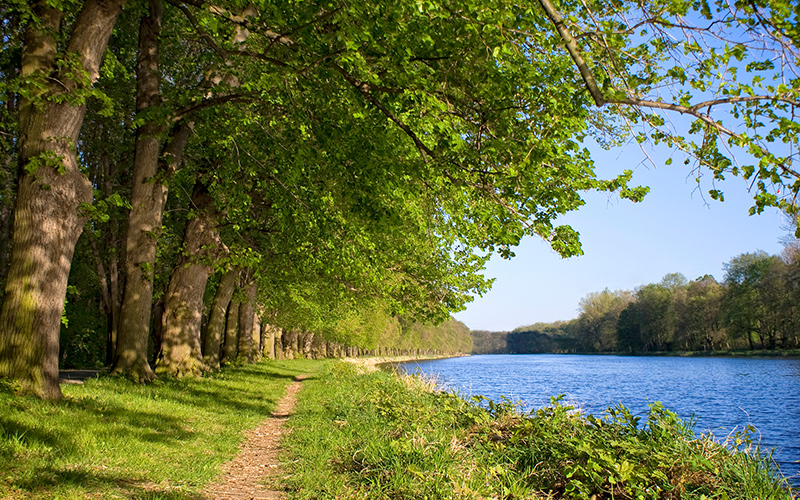Anyone can do the Danube Cycle Path from Passau to Vienna. 325 kilometers. Continuously flat to slightly downhill. Trained cyclists can easily cover the distance in three days. On one buttock, so to speak. Even with the Hollandrad no problem.
There are plenty of places to stay and eat, as well as cultural treasures along the way. The classic long-distance cycle route. An all-round carefree package for cyclists, including bicycle repair shops along the way.
300,000 cyclists pedal here every year.
Katharina Auerswald and her partner Bernhard Volkert have also pedaled here. Sometimes from the source in Donaueschingen, sometimes from Ulm and from Passau, they have been on the Danube Cycle Path to Vienna a total of four times.
But at some point the question arose: Why always ride only on the cycling highway? Why only ride where everyone else is riding?
After all, it’s 2850 kilometers from the source of the Danube to the Black Sea. So from Vienna there are still a good 2000 kilometers to discover. Through Slovakia, Hungary, Serbia (depending on the route chosen also Croatia), Bulgaria and Romania to the Black Sea, into which the Danube flows.
This made it clear to the two travel enthusiasts from the Allgäu region: It’s time for an adventure again.
Danube Cycle Path Passau – Vienna: 300,000 cyclists, Vienna – Black Sea: 600 cyclists
The Danube Cycle Path to the Black Sea is not an all-inclusive, feel-good pedal for after-work cyclists. Those who set out on the path can expect a very manageable infrastructure, sometimes exciting route conditions and sometimes quite a bit of elevation gain.
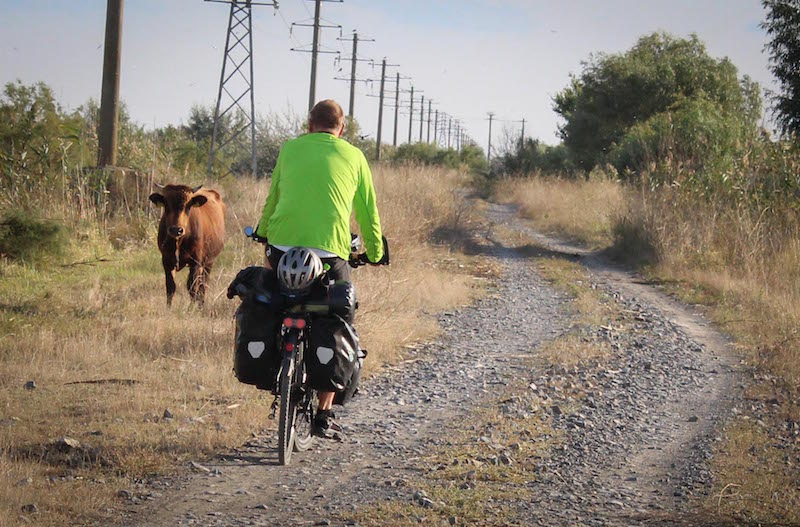
Just 10 years ago, the Danube Cycle Route was extended to the Danube Delta and the Black Sea and signposted (nevertheless, maps or GPS are a must). Accordingly, the rush is still limited.
The number of adventurers who dare to pedal through the Balkans year after year is estimated at 500 to 600. Of course, this is also due to the time factor. Who can take several weeks off for this very special cycling vacation?
Katharina Auerswald and Bernhard Volkert could, because they absolutely wanted to. The 54-year-old is self-employed as a trainer and coach. The 51-year-old works as a letter carrier and took three weeks of unpaid leave in addition to his four-week summer vacation.
Condition? Gives itself when driving
Neither of them are sports freaks, they admit that honestly. But they know from experience: Fitness comes with cycling. The will is initially more important than the figure.
With this type of preparation, which is more mental than physical, the body needs a certain amount of time to get used to the daily exertion. Means exactly: A week of muscle cramps while driving. But at least no sore muscles.
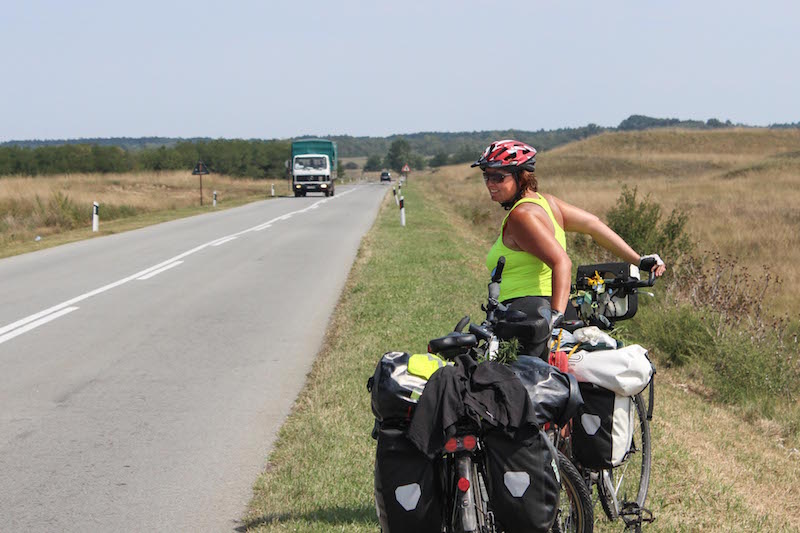
And the thing with the aching butt can’t be avoided anyway. “It always hurts like hell. Even the best saddle is no use, it starts again after two hours,” says Bernhard.
What helps against it: cycling standing up from time to time as well as smearing with special ointment in the evening and in the morning. In addition in the evening Franzbranntwein on the legs and back and everywhere, where it hurts. That cools and offers at the same time still mosquito protection. Because the biting insects are a loyal companion, especially at the height of summer.
Not an issue while driving. But as soon as the Allgäuers set up camp towards evening, the big assault begins. “At least we learned to set up the tent in two minutes,” Katharina reports with a laugh.
If you want to be flexible, you need a tent
The two recommend a tent, sleeping pad and sleeping bag to all sports enthusiasts who set out on the Danube Cycle Path to the Black Sea. If only for the sake of flexibility.
Katharina’s and Bernhard’s credo: “We want to be so free every day to say: it’s cool here, let’s sleep here.” That’s why hotels remain the exception, spending the night in the pampas the rule. Mostly wild and sheltered with sometimes more, sometimes less great views. “A tent is like a home,” Kattharina says.

On the way, you will also meet a cyclist who sleeps exclusively in fixed accommodations. That’s not easy, because in Romania at the latest, some hotels along the route are 100 kilometers apart. If you want to do your tour this way, you have to plan every day and align your route exactly with the next accommodation. Book the day before and use the navigation system, otherwise it won’t work.
Speaking of sat nav: real adventurers do it like Katharina and Bernhard: no GPS, no navigation via smartphone, just the good old road map. In return, they get astonished to amused comments from other cyclists more than once.
Including various teachings, what one must have on such a bike trip everything. “At some point we felt like we were completely unprepared. And yet we got to our destination,” says Katharina.
The few essentials: bike, 3 pieces of clothing, tent, sleeping mat, sleeping bag, food and 4 liters of water per day. Enough.
Danube Cycle Route to the Black Sea: From Country to Country
A tour from Vienna to Constanta on the Black Sea also means: 6 different countries on 2300 kilometers. With different route conditions, different infrastructure, different people.
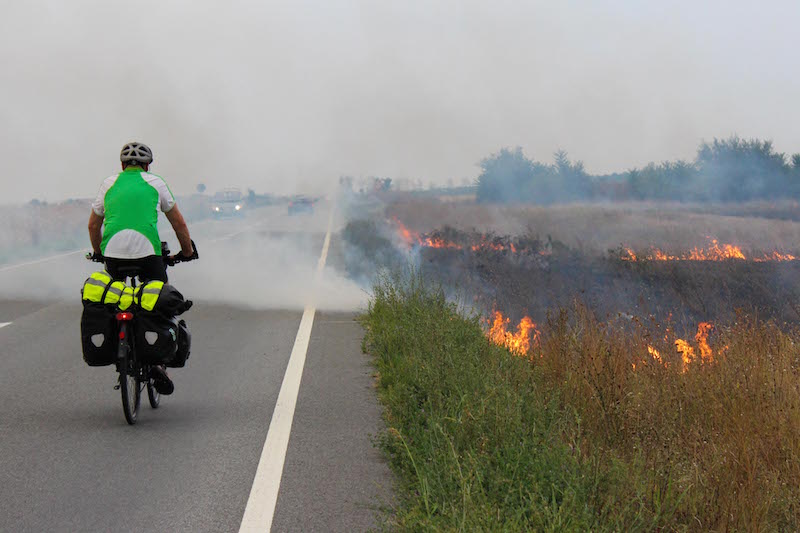
And the question: How much does the Danube Cycle Path still have to do with bike path and Danube on this route? From Budapest it sometimes runs directly along the river, very often side roads through villages far from the Danube. Or on the embankment (sometimes gravel, sometimes gravel), separated from the river by a wide strip. The Danube can often be seen again only after many kilometers of driving in smaller towns.
From the point of view of Katharina and Bernhard, the individual countries presented themselves like this:
The Danube Cycle Path in Slovakia: Here, the cycling world is still in order.
Just 70 kilometers after Vienna, there is Bratislava, a beautiful city with a relaxed flair. Slovakia scores with a top infrastructure in terms of signage, accommodation, food and bike repair shops (bike straightening for 5 euros). The last country where you can still pay with the euro and super nice people.
Hungary: Security in grandmother’s language
“The language comes back,” is Katharina’s surprising experience in Hungary. Thanks to her Hungarian grandmother, the Czech, who has lived in Germany since 1986, was raised bilingual. After a break of many decades, she finds that she can still read complicated things – and even the slang is back.
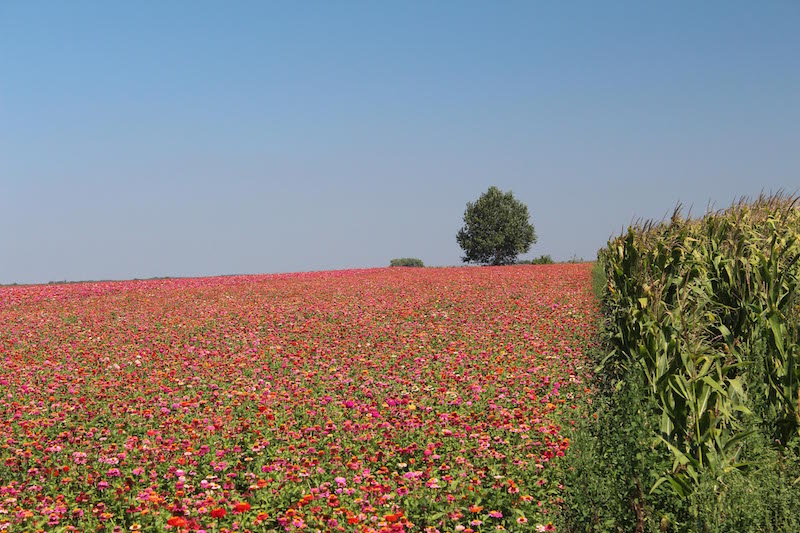
This also helps in dealing with the locals. The two don’t notice anything about the “evil right-wing Hungarians,” as is often reported in the media. They receive a super welcome everywhere and feel safe. The journey takes them along cycle paths, country roads and farm tracks.
Serbia: The positive and negative surprise at the same time
Telling about Serbia, the two start to beam: “That was the big positive surprise of our tour!” They are still raving about the encounters with the generous and helpful people and the beautiful nature.
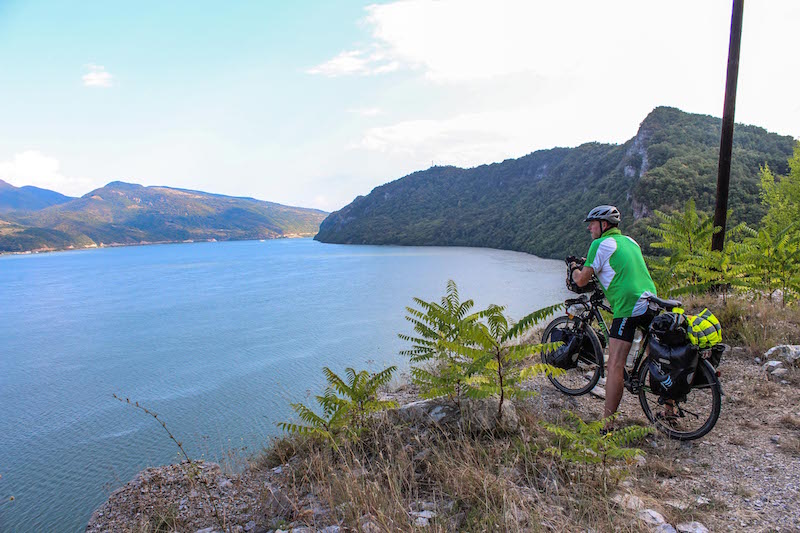
As soon as the Allgäu people stop on the street and pull out their map, someone immediately comes up and asks, “Where are you going?” As they do so, they unpack a few scraps of German and are amazed at the answer. To the Black Sea? Shaking their heads. For many of the country’s inhabitants, Vienna feels like a world trip away.
One day, Katharina and Bernhard are sitting in a café and are simply given two large peaches from the next table. Even on the way, someone keeps giving them fruit.
The greatest experience of the tour on the Danube Cycle Path: An old woman comes trudging out of the morning fog with rubber boots and plastic bags to the tent, in her hand a bag full of fruit and vegetables “I’ve seen you from my farm and brought you travel rations,” she says.
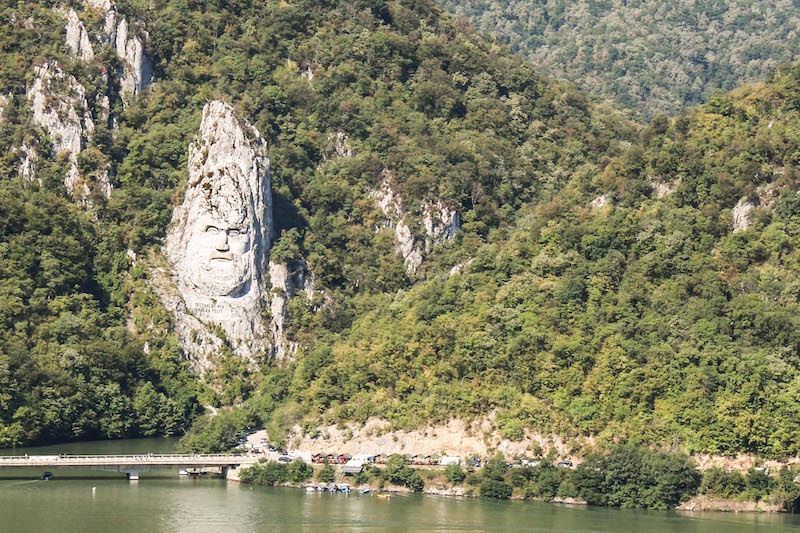
But not everything in Serbia is peace-and-joy cycling happiness. On the transit routes that cyclists have to use again and again for lack of an alternative, trucks race past at 100 km/h with minimal distance between them. “I’m usually not afraid of anything, but there I was scared to death,” Katharina reports.
The two have a similar experience in the first Carpathian tunnel (of 21) on the Serbian side. Unlit, narrow and winding. In addition cars and trucks, which seem to be relatively indifferent to cyclists. Both are very happy when this part of the tour is over.
Nevertheless, they would choose at this point at any time again the way over the strenuous Serbian side (instead of the quite flat running piece on Romanian side) of the Carpathians. In concrete terms, this means voluntarily crossing a pass with 400 meters of altitude and a 10 percent incline and more, often pushing bikes weighing 40 to 50 kilograms and passing through 21 tunnels in between. Why? The magnificent view from the top of the Carpathian Pass is worth every minute of the torture, say the two.
Romania: Wild dogs and high-fives like at the Tour de France
They had been warned about the wild dogs in Romania. If then suddenly in the middle of the journey a pack comes shooting out of a field, everything is nevertheless again different. The best advice: just stand still, then the hunting instinct goes out. Has worked in the many encounters with the stray four-legged friends.
But what to do if the journey continues and they start hunting again? Katharina grins at the memory of her loud solution: “If you don’t stop, you’ll end up under trucks.” It works.
The sad background: In Romania – as in Bulgaria and Serbia – the roadsides are paved with dead animals that no one disposes of.
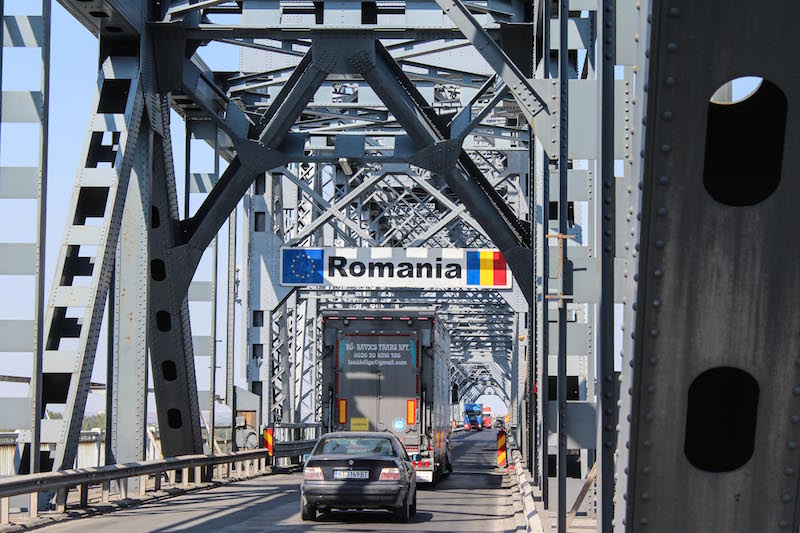
In the villages themselves, the unexpected reaction of the inhabitants: they stand at the side of the road, cheer the cyclists and let themselves be high-fived. It’s a bit like being a star at the Tour de France. That, too, is the Danube Cycle Path to the Black Sea.
Restaurants, on the other hand, are almost non-existent in the poor rural areas. Shopping facilities are also few and far between. Planning ahead for food proves to be valuable and necessary on this section of the route.
After 5 weeks of riding, Tulcea at the Danube Delta is reached. The two cycling adventurers have as many meters of altitude in their legs as during a crossing of the Alps. They are proud, happy and at first they can’t imagine how it will be to sleep in a bed again at home and not under the starry sky.
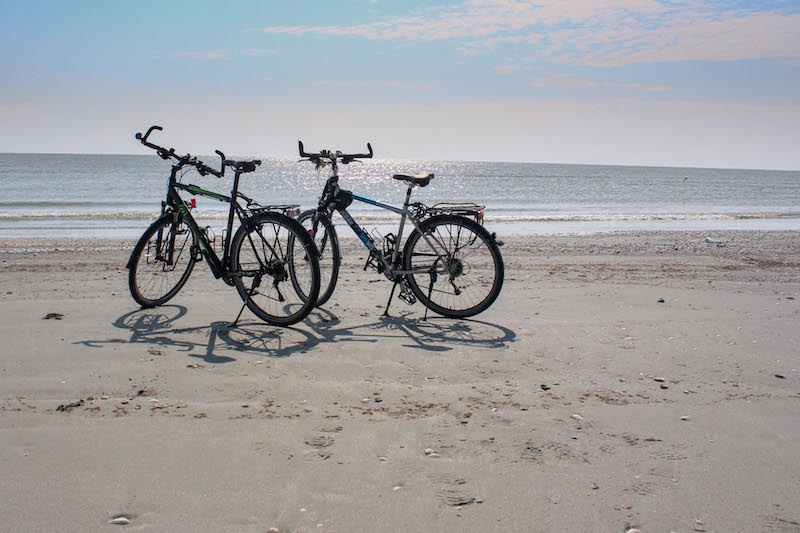
5 weeks of uninterrupted heat are over. When they arrive at their destination, a violent thunderstorm unloads an hour later and cools down by 20 degrees.
But there are still two weeks left until Katharina’s daughter picks them up. So first from the Danube Delta to Constanta, to spend relaxing days without aching butts.
When asked how far it is from Sulina to Sfantu Gheorghe when crossing the delta (from there it is still about 200 kilometers to Constanta), the answer comes: “Very far away.” From the local’s point of view, the 35 kilometers are pretty damn far. Katharina and Bernhard laugh and say, “We just drove 2300 kilometers.” Again, stunned amazement on the other side.
The conclusion: “Be friendly and don’t be afraid of wild dogs”.
And what remains as a conclusion of the seven-week journey on the Danube Cycle Path? First and foremost, that many things look very different in reality than they do in our imagination.
Especially when it comes to the question of how dangerous it is when we move on foreign terrain. Katharina and Bernhardt had been warned about many places, especially in Romania. They experienced an incredible amount of warmth and hospitality wherever they went.
“Be peaceful to people and don’t be afraid of wild dogs. Drive slowly through the towns, greet people in a friendly way and if you smile, you’ll get a lot of positive things back,” says Katharina, smiling.
Photo credits:
Photos: Katharina Auerswald
